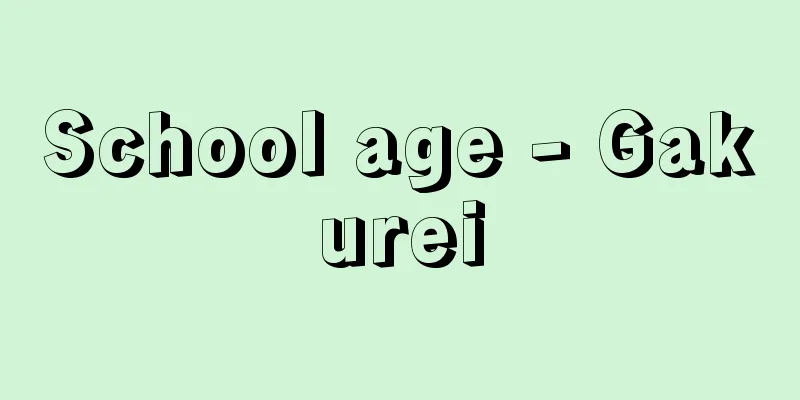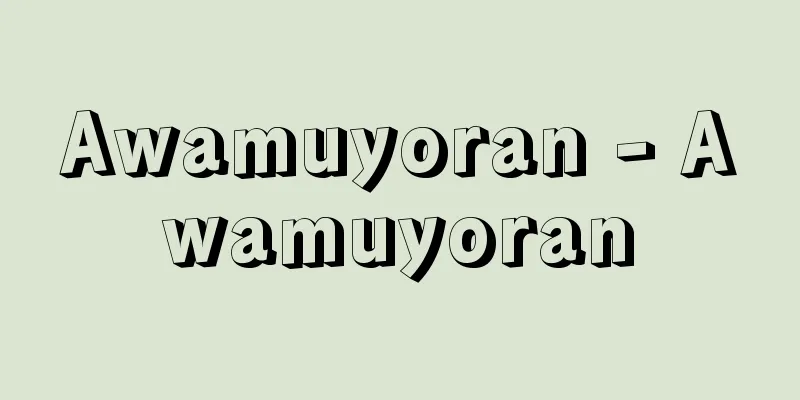School age - Gakurei

|
This refers to the age at which compulsory school attendance falls. In other words, it is the age at which a guardian must send his/her child to a compulsory education school, and under current law, it is nine years, from "the beginning of the first school year following the day after the child reaches the age of six to the end of the school year in which the child reaches the age of fifteen" (Article 17 of the School Education Act). A child whose guardian must send to elementary school is called a school-age child, and a child whose guardian must send to junior high school is called a school-age student. Historically, before the Second World War, the school age and the compulsory years of schooling did not necessarily coincide. The first regulation on age was the Education Act of 1879 (Meiji 12), which stated that "the school age is generally eight years, from six to fourteen years of age for children," and the policy of setting the school age at eight years has been consistently followed. However, during this time, the compulsory years of schooling increased to four years in 1900 (Meiji 33), six years in 1907, and continued until the end of the war (1945) (it was increased to eight years in 1941, but the implementation was postponed until the end of the war). [Tsubura Kiyoji] Compulsory education on rights protectionToday, compulsory education is understood to guarantee children's right to education, and education during school age must be guaranteed for all children. In order to fully implement school attendance, municipal boards of education are to create a school-age register for those who live in their municipality and will be attending elementary or junior high schools from April of the following year, and notify parents of the enrollment date and other information by the end of January. Municipalities must provide necessary assistance to parents of school-age children and students who are deemed to have difficulty attending school for economic reasons (Article 19 of the School Education Law), and, except for special exceptions, school-age children must not be employed as workers (Article 56 of the Labor Standards Law). In this way, they are trying to guarantee education for all children during school age. However, parents of children who are deemed to have difficulty attending school due to poor health, incomplete development, or other unavoidable reasons may postpone or be exempted from the compulsory attendance requirement (Article 18 of the School Education Law). [Tsubura Kiyoji] Arguments for lowering the school ageSince around 1970, there have been calls to lower the school age (the start of school enrollment) on the grounds of the accelerated mental and physical development of young children. It is true that there are notable improvements in the physical development and literacy of young children, but it is necessary to consider whether these children have developed the ability to concentrate for a certain period of time, which is necessary for them to continue learning together in a class. Furthermore, in light of the trend toward deregulation that began in the latter half of the 1990s, there is also a movement to make the school enrollment age more flexible, but this too requires careful consideration. In some foreign countries, the start of school enrollment is at age 5, but it is generally around age 6 or 7. [Tsubura Kiyoji] "Theory of Compulsory Education" edited by Ito Hideo (1968, Daiichi Hoki Publishing)" ▽ "School Education Law Article by Article, 4th revised edition (1999, Gakuyo Shobo)" ▽ "Reader on Educational Law, edited by Moribe Hideo and Yamamoto Masao (1999, Educational Development Research Institute)" ▽ "Handbook of Educational Law, various editions by Shimomura Tetsuo (Gakuyo Shobo)" [Reference] | |Source: Shogakukan Encyclopedia Nipponica About Encyclopedia Nipponica Information | Legend |
|
義務就学期間にあたる年齢をいう。つまり、保護者がその子を義務教育諸学校に就学させなければならない年齢であり、現行法では「子の満6歳に達した日の翌日以後における最初の学年の初めから、満15歳に達した日の属する学年の終わりまで」(学校教育法17条)の9年である。保護者が小学校に就学させなければならない子を学齢児童、中学校に就学させなければならない子を学齢生徒という。 歴史的にみると、第二次世界大戦前においては、学齢と義務就学年限とはかならずしも一致していなかった。年齢に関しては、1879年(明治12)の教育令が「凡(およそ)児童六年ヨリ一四年ニ至ル八箇年ヲ以(もっ)テ学齢トス」としたのが最初の規定であり、学齢を8年とする方針が一貫してとられてきた。しかし、この間、義務就学年限は1900年(明治33)に4年、1907年に6年となって終戦(1945)まで続いた(1941年に8年となったが、実施延期のまま終戦)。 [津布楽喜代治] 権利保障の義務教育今日、義務教育は子供の教育を受ける権利を保障するためのものと解されており、学齢期間中の教育はすべての子供に保障されなければならない。そこで、就学を完全に実施するため、市町村教育委員会は、その市町村に居住し翌年4月から小・中学校等に就学する者について学齢簿を作成し、1月末日までに保護者に入学期日等の通知を届けることになっている。そして、経済的理由によって、就学困難と認められる学齢児童・生徒の保護者に対しては、市町村は必要な援助を与えなければならず(学校教育法19条)、また、学齢期間中の者は、特別の例外を除き、労働者として使用してはならない(労働基準法56条)。こうして、学齢期間中の教育をすべての子供に保障しようとしている。ただ、病弱、発育不完全その他やむをえない事由のため就学困難と認められる者の保護者に対しては、就学義務を猶予または免除することができる(学校教育法18条)。 [津布楽喜代治] 学齢引下げ論1970年(昭和45)ごろから、幼児の心身の発達の加速化などを理由に、学齢(就学の始期)を引き下げようとする主張がなされてきた。確かに、幼児の身体的発達や読み書き能力の発達など顕著なものがあるが、しかし、その幼児たちに学級単位で一斉的な学習を継続するのに必要な、一定時間集中できる力が発達しているか否かの検討が必要である。また、1990年代後半からの規制緩和の流れのもとで、就学年齢の弾力化を主張する動きもあるが、やはり慎重な検討が必要であろう。諸外国の場合、就学の始期は5歳のところもあるが、6、7歳が一般的である。 [津布楽喜代治] 『伊藤秀夫編著『義務教育の理論』(1968・第一法規出版)』▽『鈴木勲編著『逐条学校教育法』第4次改訂版(1999・学陽書房)』▽『森部英生・山本政男編『全訂・教育法規読本』(1999・教育開発研究所)』▽『下村哲夫著『教育法規便覧』各年版(学陽書房)』 [参照項目] | |出典 小学館 日本大百科全書(ニッポニカ)日本大百科全書(ニッポニカ)について 情報 | 凡例 |
<<: Hidden fish - Encheliophis sagamianus
Recommend
Rock cherry - Rock cherry
A perennial plant of the Primulaceae family (APG ...
Christoph Scheiner
German Jesuit and astronomer. Born in Swabia. He ...
Benefit - Kyufu
Under private law, it refers to the act to be per...
Ski jump
…For competitions over 30 km, there are food stat...
lx
Please see the Lux page. Source : "Chiezo&qu...
Pinacone
…It is also called pinacone. A general term for d...
Aswan - Aswan (English spelling)
A city in southern Egypt, located on the right ba...
Epipyropidae
…They are found in Honshu, Shikoku, Kyushu, Taiwa...
Marine officer school
... Outside of the United States, the British Roy...
Kissitsukushin
A military commander in the final days of Baekje....
nomarchēs (English spelling) nomarches
…Governors were appointed by the king, but in rea...
Three Islander
… Most merchant ships, which make up the majority...
Staatslehre (German: State Studies)
What is usually called "state science" ...
Indo-Afghan race - Indo-Afghan race
…The Arabian race lives in the arid regions of We...
Chongqing Negotiations
Top-level negotiations between the Chinese Communi...









